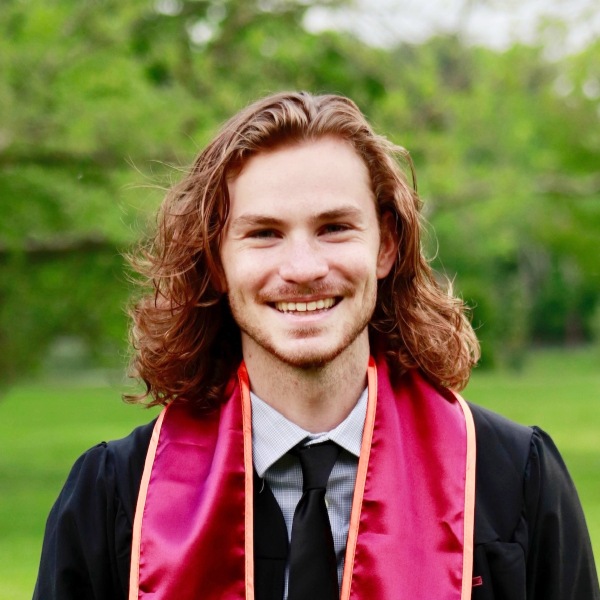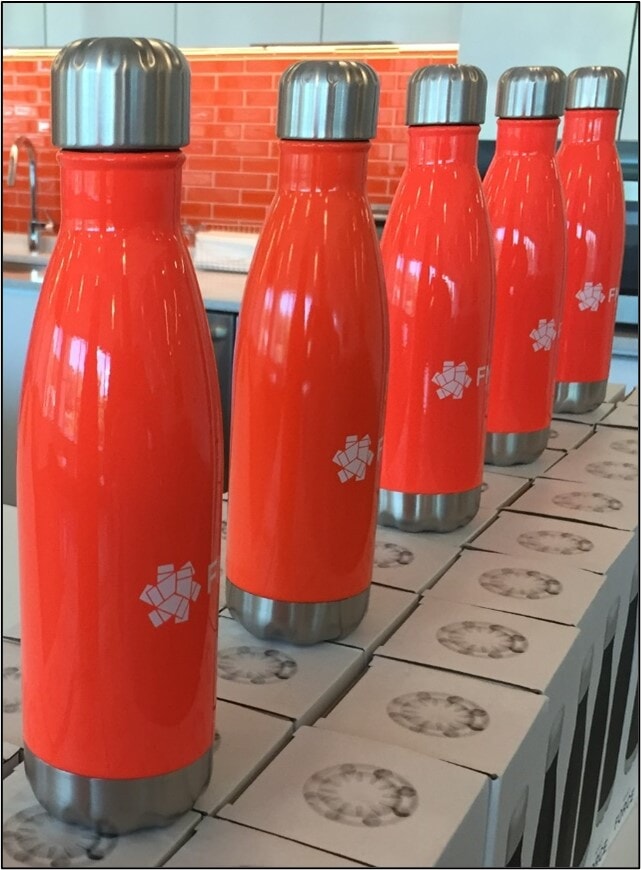FMP Stories in Sustainability
April 22, 2025 in Wonders of the Workplace, Workplace Sustainability
By Sam Deschenes
Sustainability often looks different from person to person depending on their location, circumstances, and ability. FMP recognizes that everyone is on their own sustainability journey, shaped by their unique needs and challenges. For Earth Day 2025, we are spotlighting a few employees’ journeys to understand how they have navigated becoming more sustainable in their day to day lives.
How are you currently trying to improve sustainability in your life?

Ruby Brattain: I am trying to focus on finding ways to reduce single use products in my daily life. For instance, avoiding or reducing the use of single-use cotton rounds when possible (I am looking to buy reusable cotton rounds). I am also actively working to reduce the amount of clothes I purchase. This includes looking for higher quality items that will withstand wear and tear better and saving to buy higher quality (and often more expensive) items that I can wear for several years or seasons. Finally, I have made it a goal to try to take public transportation more often or walk places rather than driving my car (this is made easier by the fact I hate driving in this high traffic area and try to avoid it anyways!)

Julia Woods: I’m working on reducing my number of Amazon subscriptions and orders. I can go to my corner store to pick up the same items, and I want to use what I have before I buy something else. I don’t need four of the same water bottle just because the colors are different (which hurts my heart because I love having fun-colored Owalas). I also don’t want to impulse shop and then never use an item, where it will end up either sitting in my closet or thrown in the trash. I would either 1) ideally, not buy it in the first place or 2) see if any of my friends or family can use it.
I also want to be aware of my digital footprint. I heard that looking up something on ChatGPT is equivalent to filling up a whole bucket of water, because of how much water it takes to cool the systems. I want to avoid using AI, unless I’m using it strategically and carefully.

Kevan McCulloch: I’ve been trying to reduce my paper and plastic waste, particularly by avoiding single-use items. One small change I’ve made is replacing paper towels and napkins with reusable cloth “paper” towels, which were a thoughtful gift from my parents. Additionally, I opt for eco-friendly cleaning products, like all-purpose cleaning powders that mix with water, cutting down on plastic waste from buying new products.

James Wilcox: I’m working to reduce my reliance on single-use plastics by consistently using a refillable aluminum water bottle, reusable grocery totes, and avoiding buying plastic-packaged produce. I also buy cleaning products in bulk and use refillable containers to cut down on unnecessary packaging waste.
What has been your biggest challenge in becoming more sustainable?

Ruby Brattain: I would say the biggest challenge in becoming more sustainable is the cost. Looking for higher quality clothing that is more durable means the upfront cost is a lot higher!
Julia Woods: I think the biggest challenge is staying focused on the end goal and not giving up along the way. I have a lofty goal of consuming less in all aspects of my life. When I slip up or do not have a lot of visible progress, I feel like I take three steps back. I think it’s important to remember that progress isn’t always linear, and I can take baby steps towards my goal.
Kevan McCulloch: My biggest challenge in becoming more sustainable has been grocery shopping. At many budget-friendly stores, the produce is packaged in small plastic containers which makes it difficult to reduce single-use waste.
James Wilcox: One of my biggest challenges is the extra time and effort that eco-friendly choices often require, especially given work and personal time demands. It’s also difficult to find reliable, trustworthy information on the most sustainable products and materials.
What is one sustainability-related change you would like to see happen in your community?

Ruby Brattain: I would love to see public transportation become even more accessible and safe, with metro/buses running more frequently so people are able to take it without planning for longer commute and wait times! While I love taking public transportation, it often means I need to wait 20+ minutes for buses which isn’t always practical or time efficient.
Julia Woods: I moved to Richmond, VA, where recycling services are notoriously inconsistent. For my apartment, I was not even provided a recycling can. That’s the case for my entire block, but the next block over has recycling cans. I would love to see the city bulk up its recycling capabilities, so everyone has the opportunity to conveniently recycle.
Kevan McCulloch: I wish my apartment building offered a composting program for residents. The composted material could be put to good use in maintaining the gardens and grounds around the complex.
James Wilcox: I’d love to see better incentives for businesses to adopt sustainable practices. I think many business owners want to go green, but they hesitate due to the impact on their bottom line. Financial incentives like tax breaks could help make eco-friendly upgrades more accessible.
Integrating sustainability into our lives can be easy and can sometimes be disruptive. However, as Julia noted above, any step, big or small, toward a greener future is a step that counts. What are some of the ways you’ve incorporated sustainable practices into your daily routine?

Sam Deschenes is a Senior Human Capital Consultant and joined FMP in November 2020. He is also the head of FMP’s Sustainability Committee. He received his Master’s in Industrial/Organizational Psychology from Middle Tennessee State University. Sam works with agencies to improve and implement performance management, performance pay, and benefits will providing support with data analysis, policy analysis, and program management. In his free time, Sam enjoys running, drumming, deep diving into his newest interest, or exploring the offerings of D.C.
